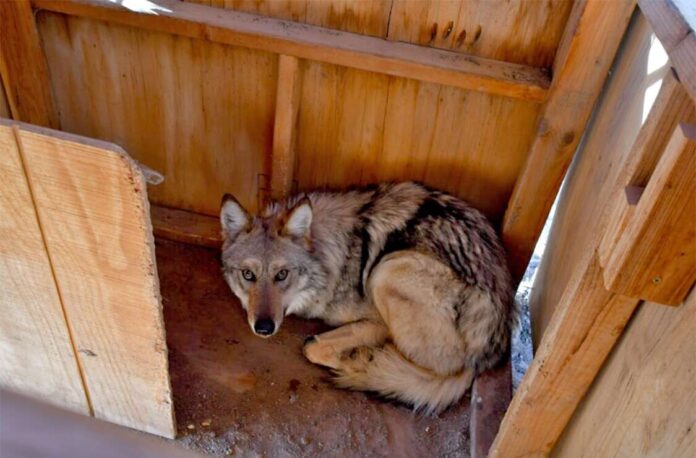Asha, the Mexican grey wolf, took us on a journey this year.
The region’s most famous escapee, she made her break from a federal wolf reintroduction program in Arizona and migrated through New Mexico before her recapture Dec. 9.
Coincidentally, the feds will soon transplant gray wolves from an Oregon program into southern Colorado’s prime wolf habitat, where Asha was headed. However, our nomadic Asha would not have been allowed to breed with the newcomers because she is a subspecies, Canis lupus baileyi, or “lobo,” the most genetically distinct lineage of gray wolves in the Western Hemisphere.
The U.S. Fish and Wildlife Service (FWS), sounding like protective parents, might say to their girl, “They’re not your kind.”
It’s one reason Asha can’t just be a regular wolf and wander as her ancestors did. The other is that thousands of ranchers make a living raising livestock, and in their view, it’s hard enough doing what they do without do-gooders adding another predator to the landscape.
I understand the need to restore wolves to the ecosystem. Asha and her kin, unlike the coyote, feed on elk and keep them from tramping down streambeds and eating forage that could support lots of animals, including cattle. But I also sympathize with livestock raisers, who still aren’t compensated fairly.
That’s changing. About a year ago, the County Livestock Loss Authority was formed. With federal and county funding, it will pay for wolves’ livestock depredations within 14 days, reported the Taos News. And U.S. Sen. Ben Ray Lujan introduced the Wolf Act of 2023 to increase compensation for confirmed kills to 100% of market value and cover increased management costs and decreased birth rates.
A little history: Before Anglo settlement, wolves and their prey were balanced. Cattle ranching changed all that. As domestic animals competed with wildlife, prey numbers dropped, and wolves began eating cattle. Hunting, trapping, and poisoning eliminated every last lobo from New Mexico.
In 1998 the FWS reintroduction program began, but after 25 years just 241 Mexican grey wolves inhabit portions of New Mexico and Arizona. The agency is focused on increasing their numbers, and Asha, known to agents as F2457, has a role. She descends from the seven remaining Mexican wolves.
Named by school children, Asha was born in Arizona in 2021 and left her pack in 2022. A radio collar allowed FWS to track and catch her near Angel Fire in January. At the Sevilleta National Wildlife Refuge, north of Socorro, she was introduced to male wolves in hopes she would breed. Alas, no chemistry. Released in June, she headed north again, traveling 650 miles before her second capture. Now back in Sevilleta, she has two new suitors. FWS hopes to release her again in 2024, this time with pups.
Tethered to my computer, I’ve enjoyed the travels of freedom-loving Asha, along with many other rooted observers.
Environmentalists were ecstatic, urging FWS to let her be. They were crushed at her capture.
“Asha deserved to live her wild life and not be used as a pawn in the political battles over wolf recovery in the West,” Greta Anderson, deputy director of Western Watersheds Project, said in a news release.
Brady McGee, Mexican wolf recovery coordinator, said they captured her “out of concern for her safety and well-being.”
I’m with McGee. The last wandering wolf, a male named Anubis, was illegally shot and killed near Flagstaff last year during his second foray. He was wearing a pink tracking collar, so the shooter “knew the wolf was an animal of value to science,” reported the Arizona Republic.
I’d rather know that Asha will live to see another trek and do her part for the Mexican gray wolf gene pool.



